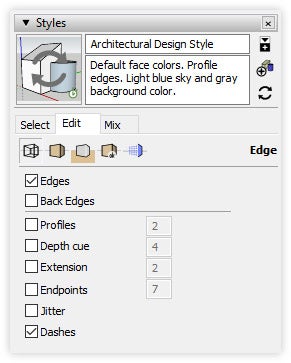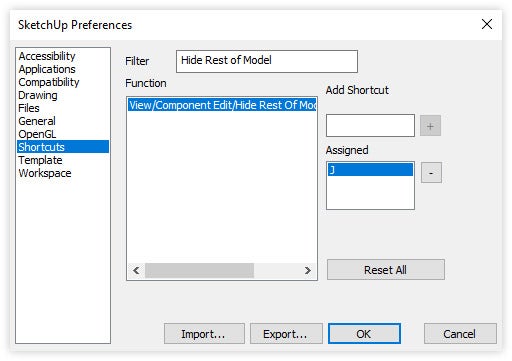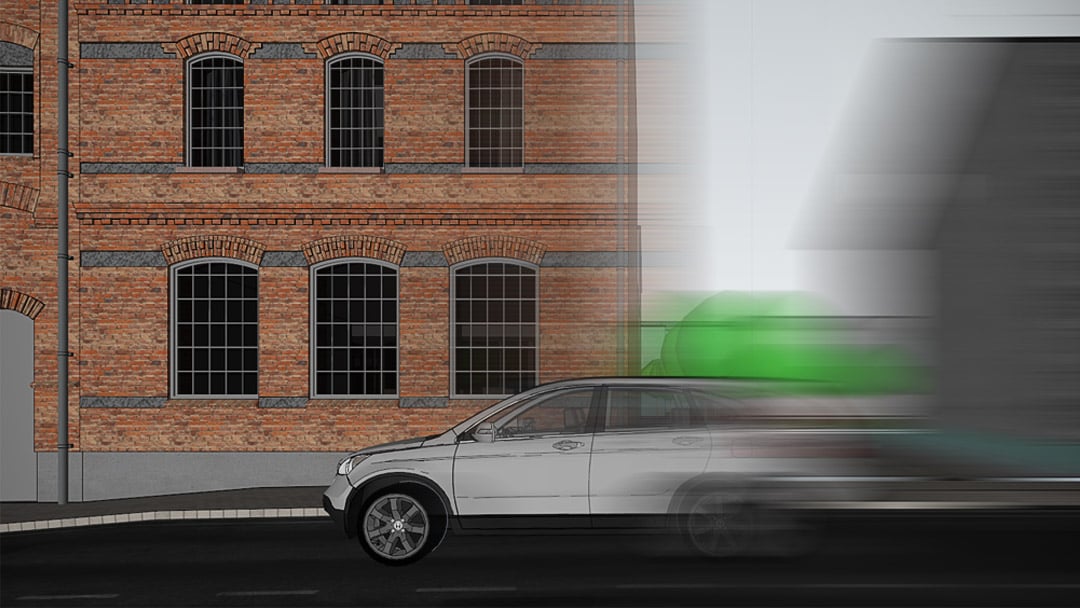Achieving the expected outcome of your ideas requires great amount of time, work and determination. The more advanced your project is, the more complicated your scene may be. SketchUp easily deals with simple models but it might get tricky when it comes to the intricate ones.
1. Use simple styles
Styles define how the information in .skp file is displayed. The more data you have, the harder it will become to navigate through. Each viewport rotation with Orbit Tool means SketchUp has to process lots of data. Customize your Style by setting off shadows and hidden geometry. Make sure to untick all the unnecessary edge settings. Don’t forget to exclude Profiles too as this option makes a great impact on SketchUp efficiency. Remember you can always create two separate Styles for modelling and presentation. Switch between them whenever you like.

Profiles tend to slow SketchUp down most.
2. Create groups and components
Divide each scene you are working on into hierarchical groups. If we label our model as a free geometry, it will be much more troublesome for SketchUp than if it was cleverly divided into groups. Try working with definite sets and replace your models with components if they repeat.
3. Hide unnecessary geometry
Use Layers! Attribute specified model’s elements to each layer and make sure to turn them off when you don’t need them. While arranging an interior, you don’t pay attention to the garden, do you? Remember to turn off the rest of your model while working inside the group. You can do it using Display settings by clicking Window/Model info/Components. Also, consider assigning a keyboard shortcut for this option, so you can do it quicker next time. We went with “J” shortcut ourselves but you can choose whichever you want.

Customized shortcut for hiding rest of the model often comes in handy.
4. Remove elements you don’t use
Every time you import a model from 3D Warehouse into your scene SketchUp retain their materials, geometry, textures etc. in its memory. Even after you have removed the model, SketchUp will store some of its information. Just think what happens when you can’t make up your mind and import tens of different models. To absolutely wipe out that data use Window/Model info/Statistics/Purge Unused. You can also try CleanUp3, a popular cleaning device with lots of advanced settings.
5. Reach your GPU potential
SketchUp’s use anti-aliasing by default. That’s the process which smoothes object’s edges. The intensity of this effect can be adjusted in OpenGL settings. To access this tab, select Window/Preferences/OpenGL. Choosing smaller number distorts models’ edges, but you’ll have better overall performance. It’s also a good idea to tick Use fast feedback option, which accelerates your work, particularly on more complex models. Another good thing to help you boost your GPU might be ticking off Use maximum texture size option in OpenGL tab. Do it, unless you have it ticked off on default.

That’s a proper way to set OpenGL.
6. Save your files responsibly
Performing complicated operations sometimes may cause crashing and result in surprisingly shutting SketchUp down. That’s irritating and, what’s even worse, it often makes your file permanently gone. Luckily, in such situations you can rely on Autosave. It automatically and regularly oversaves your file on the computer as the work progresses. This feature is undoubtedly a very useful one, but only to a certain extent. Imagine you are working on a complicated project. The more complex it is, the longer it takes to save the file. If the autosave occur every five minutes wasting additional amount of time, then what’s the point of using it? It’s more effective and rational to set the autosave on 15, 20 or even 30 minutes. You can set the demanded interval in system Preferences tab by choosing Window/Preferences/General.
7. Replace complex models with proxies
Depending on their quantity, polygons affect smooth SketchUp performance. Smaller number of polygons makes a model lighter and easier to operate. With detail-structured models our work becomes a bit harder. Giving up on high-poly is not a good way out of the situation, as it takes place at the expense of sacrificing visualisation quality. This makes us find a good balance and V-Ray Proxy seems to fit just right. It allows geometry to be imported from an external file only when rendering. The geometry itself is simplified in our scene, hence it doesn’t take that much resources. That’s another great way to optimise SketchUp efficiency.
Find out more tips on speeding up with SketchUp in our video tutorial:
Anything else you would like to know about optimization? Just ask@modelup.co. We’ll answer your questions in no time. Oh, did we mention you can become an expert in 3D design with our newsletter? Consider subscribing, we put tons of fun things there.


